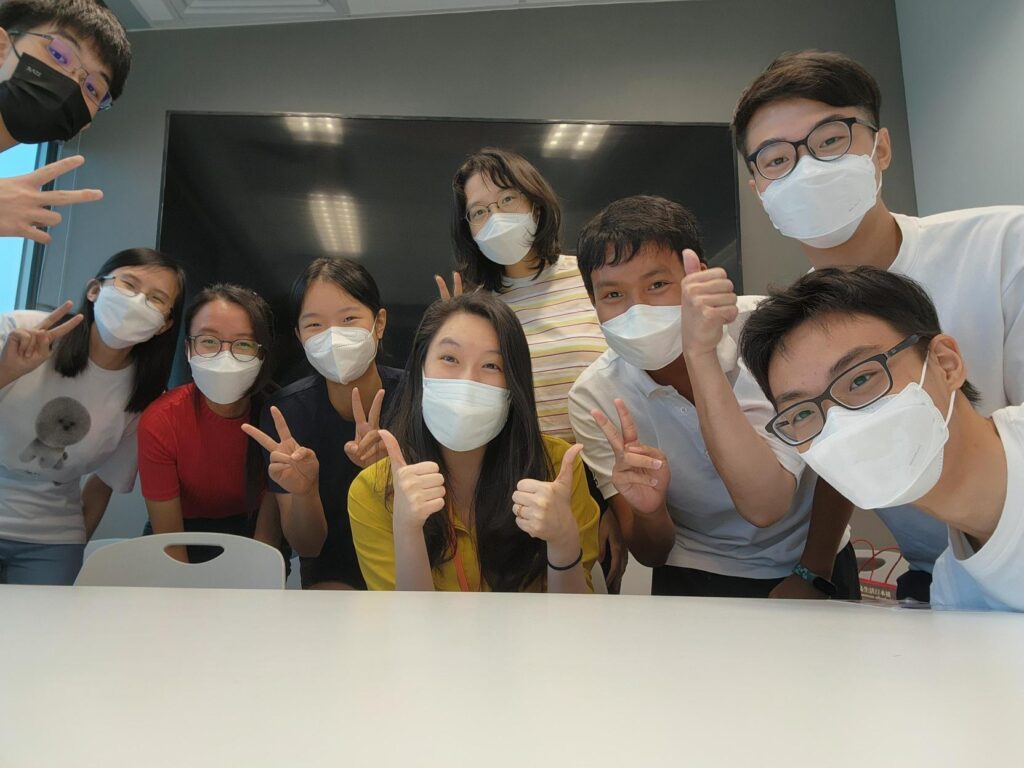e-News
Early Career Teaching Award, 2022 Teaching Excellence Awards
Early Career Teaching Award, 2022 Teaching Excellence Awards
Dr Mei Li Khong
Senior E-learning Instructor, School of Clinical Medicine
 |
What is your teaching philosophy? In the same way the conductor sees the big picture, I plan intended learning outcomes, activities and assessments of a course/programme with the end-goal of aligning with university educational aims. Curricula I play a part in developing should have long-lasting and meaningful outcomes that not only support a student’s career but also groom them to be agents of positive change. As a conductor that focuses on bringing out the best in every musician, I advocate using student-educator partnership (SEP) for teaching and learning. Both partners gain deeper understanding of learning. I also believe that when students are empowered with an active role in learning, they thrive – not only as learners, but as future practitioners. A musical performance is shared with others. My teaching philosophy stems from the constant exchange of information and collaboration with colleagues and educators abroad. In the same way, I promote my evidence-based practices to others locally and globally. How do you engage students? I integrate strengths and interests of individual students in self- and peer-learning. As a teacher, I provide students with basic conceptual knowledge. Then, I empower them to apply their knowledge in meaningful ways and facilitate their creation of solutions for real-world issues. Along the way, I provide close mentorship with regular learning feedback. For example, in a Transdisciplinary Team Project (TTP) course, I supervised a team of students with varying interests and expertise. They were brought together to identify real-world issues and develop projects that would make a positive impact on society. Students decided to tackle the global issue of Hepatitis C while integrating Biochemistry, Public Health, Engineering, and Economics. The students themselves divided responsibilities of research, knowledge exchange, and service. Students then produced team research outputs of their choice (i.e. diagnostic tool development, public health study, conference presentations, community outreach, scholarly write-up, websites). To guide students towards these tasks, I provided regular feedback about their monthly progress. I also provided close mentorship at all stages of their assignments whilst connecting them with other experts who could help with their work. All in all, such a transdisciplinary course where research and teaching converge promoted student learning in the highest cognitive domain – conduct, collaborate and create solutions to wider societal issues. What kind of teacher-student relationship do you establish? In the last three years, I invited students to co-develop solutions to challenges encountered in the rapid transition to online teaching. This Student-Educator Partnership (SEP) involved varying levels of partnership – from consulting students for insights into curricular improvements, to co-designing T&L improvements, new T&L innovations, and good pedagogical approaches. Then, I invited students to adopt or promote (among peers) the vary T&L approaches co-designed. The greatest impact highlighted by student co-designers was professional development, deeper understanding of learning, and stronger relationships with teaching staff and the Faculty. Likewise, from a teaching standpoint, I learnt from students which activities or pedagogies form enduring, meaningful T&L outcomes most effectively. Eventually, both students and I align in our teaching and learning goals. In what ways do you think your teaching (or T&L developments) would impact medical students? My teaching aims to impact medical students to be holistic learners through active learning and how theory fits with practice. I advocate active learning through flipped classroom approaches where students are guided to apply and integrate their learning through case-based learning and multidisciplinary exercises. I also develop asynchronous online simulations that trains pre-clinical students through a guided approach towards clinical investigations, ethical decision making, or patient communication. When medical education shifted online in 2020, student-student and student-teacher interactions in HKUMed proved challenging, especially with 300 students in each cohort. Lack of interaction resulted in a perceived lack of learner and wellbeing support. Alongside medical students themselves, we redesigned the online learning environment for the pre-clinical curriculum. Changes included: (1) reformatting online forums to an accessible YouTube-style forum; (2) forum monitoring by a pedagogy support team; (3) involving near-peers to facilitate discussions; (4) providing automated post notifications that are visible to teachers and students. With the redesigned forum, I observed greater depth of discussion. Student peers and near-peers provided multidimensional insights without compromising accuracy, especially with teachers validating responses towards the end of discussions. I believe this creates a mutually supportive learning environment among peers, near-peers and teachers. What is the broader impact of your teaching in medical or health sciences education? By partnering with students in designing and delivering T&L, I see waves of student-centred improvements in the curriculum without compromising professional standards. Leading on from that, we see a shift from students being passive recipients to students being designers and agents of their own learning. We also see a shift from students merely learning to an awareness about what is being learnt and how they should be learning in the curriculum. Furthermore, students are forming their professional identity as they closely engage with teachers – some aspire to be clinical educators who are similarly student-centred, others as health professionals who apply theory into practice with empathy and effectiveness. The broader impact of my teaching is to inspire a generation not only to focus on passing examinations or memorising material, but to become holistic individuals – as doctors, researchers, educators, and beyond.
Transdisciplinary Team Project
Student-educator partnership
Active Learning |



